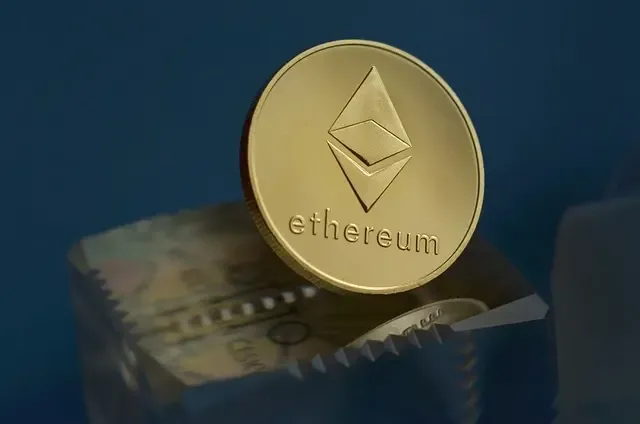Understanding Optimism: Creating a Bright Future for Ethereum
Written by: Nansen
Compiled by: TechFlow
Introduction
Everyone has heard of Ethereum 2.0 and how it addresses Ethereum's scalability issues. But what if I told you that Ethereum has already been scaled, regardless of Ethereum 2.0?
The shift from Proof of Work (PoW) to Proof of Stake (PoS) consensus is just the tip of the iceberg. The real challenge lies in creating an entirely new framework for blockchain scalability, transitioning from monolithic blockchains to modular blockchains. This is Ethereum's solution to the blockchain trilemma, aiming to increase throughput while maintaining decentralization and security.
The blockchain trilemma refers to the need for blockchains to balance three core principles (decentralization, speed, security), where improving one principle is unlikely to happen without sacrificing another.
Blockchains that perform all computations and processing on a single chain are referred to as monolithic blockchains. Most Layer 1 (L1) solutions today follow this structure, falling under the category of monolithic blockchains.
In contrast, modular blockchains split the chain into execution layers, security layers, and data availability layers. Each chain has a specific function and builds upon another chain to inherit the characteristics of the previous layer. In Ethereum, Ethereum L1 serves as the security and data availability layer, while the second layer (L2) built on it acts as the execution layer.
The goal of a modular architecture is to be several orders of magnitude more powerful at each layer than a monolithic blockchain. The aim is for L2 to perform any task that a monolithic L1 can do, but better, while also seamlessly interacting with other L2s. Optimism is an example of Ethereum L2, designed to achieve this goal. 
Monolithic vs. Modular Blockchain Structures
What is Optimism?
Optimism is the first Ethereum L2, leading the development of the Ethereum Virtual Machine (EVM) compatible Optimistic Rollup solution. Optimism is similar to Ethereum, capable of processing transactions at scale while retaining Ethereum's security.
The name "Optimistic Rollup" comes from the way transactions are processed. By default, it is assumed that transactions are accurate and do not require computation. It relies on a fraud-proof mechanism to ensure the legitimacy of transactions.
Validators (anyone running an Optimism "full node") can challenge the validity of transaction proposals submitted by proposers, and then the rollup will verify by executing the transaction computations on Ethereum. Optimism sets a challenge period of one week; if a transaction proposal is contested during this period, a final result will be determined and submitted to the Ethereum mainnet.
If a proposal is proven to be fraudulent, the validator will be rewarded, and the proposer will be penalized. Proposers need to bond an ERC-20 token pool, and rewards come from this pool. The token in Optimism is ETH. This creates an incentive mechanism that encourages validators to catch bad actors, while proposers only submit accurate transaction proposals. Fraudulent proposals will be discarded, and only correct proposals will be finalized. The transaction itself will not be affected; only the results of the fraudulent proposals will be removed.

A Brief Overview of How Fraud Proof Works
In addition to its technical strengths, Optimism has an intriguing aspect: the organization behind it is a public benefit corporation aimed at supporting public welfare projects. Since the project has not yet fully decentralized, the team donates all profits earned by centralized proposers to public goods on Ethereum for their expansion and maintenance. In 2021, the team donated a total of $1 million to such projects.
What Benefits Does Optimism Bring?
Optimism primarily brings four benefits: EVM equivalence, data security, speed, and cost.
Even if Optimism is not the most EVM-compatible chain, it is among them, with a focus on making strides in EVM equivalence. Optimism can support any Ethereum application using the Optimistic Virtual Machine (OVM), which is a virtual machine compatible with EVM.
Developers can deploy any Ethereum-based dApp on Optimism with minimal changes to the architecture. This allows decentralized applications (dApps) on Ethereum to seamlessly integrate into Optimism.
Unlike sidechains like Ronin, which have their own security measures because they operate independently, rollups like Optimism can directly leverage security from the Ethereum mainnet. Transactions are processed on Optimism, but the transaction data is written to and stored on Ethereum. Thus, Optimism retains Ethereum's security while ensuring scalability.
In the Ethereum ecosystem, computation is very slow and expensive. By defaulting to not compute transactions, Optimism can achieve scalability improvements of 10 to 100 times, depending on the nature of the transactions. Optimism can almost achieve instant transactions, allowing users to check their transaction results immediately; furthermore, transactions on Optimism are very cheap, costing only a fraction of Ethereum's transaction costs.
Currently, the base transfer fee on Optimism is $1.66, while the fee on Ethereum is $8.77. It is estimated that Optimism has saved over $335 million in on-chain transaction miner fees.
Does Optimism Have Any Drawbacks?
Optimism has three main drawbacks: long withdrawal times and high fees, potential incentive misalignment among online users, and potential censorship of transactions on L1.
Due to the one-week challenge period for fraud proofs, the waiting period for withdrawals through the official Optimism cross-chain bridge is also one week. It is important to keep this in mind during use, as withdrawals through the main chain bridge cannot be canceled once submitted. The cost of withdrawing through the main chain bridge is high, potentially exceeding $100, due to the numerous security measures in place. Such a long and expensive withdrawal period can negatively impact the acceptance and composability of Optimism.
To address this issue, third-party bridges like Hop exchange have emerged. These bridges can facilitate instant withdrawals and are usually cheaper than the main chain bridge. Optimism is working to reduce withdrawal fees, but necessary updates are still a few months away.
The network relies on an incentive mechanism to encourage validators to challenge fraudulent proposals and proposers to submit correct proposals. If there are few or no fraudulent proposals, validators will receive little or no rewards from operating nodes, as they only earn rewards when successfully challenging fraudulent proposals. This can suppress the motivation of validators to operate nodes. Without validators, proposers could submit fraudulent transactions at will, leading to network failure.
However, this scenario is unlikely to occur. In addition to potential network rewards, there are incentives for users to act as honest validators. To ensure the protocol operates smoothly, applications on Optimism (such as third-party bridges and DeFi protocols) have incentives to encourage users to become honest validators.
Proposers might bribe Ethereum miners: if a transaction has sufficient value, proposers could pass fraudulent proposals during the computation check at a low cost. This would undermine trust in the network and lead to network failure. However, this scenario is also unlikely to happen, as miners' incentives in the Ethereum network are aligned.
If this were to occur, the value of the Ethereum network itself would be negatively impacted. Miners would lose long-term value as Ethereum miners by chasing such one-time rewards. Honest proposers and validators tend to bribe miners with higher rewards, as the total value involved may exceed that of a single transaction.
How Does Optimism Compare to Arbitrum?
Optimism is the first company to invent the EVM-compatible Optimistic Rollup protocol, but delays in launching the mainnet have given Arbitrum an advantage. For example, Uniswap was the first to launch on Optimism, but due to delays, the Uniswap team proposed launching on Arbitrum while waiting for Optimism.
Both Optimism and Arbitrum are Optimistic Rollups, so they are similar in many ways, with the main difference being their fraud-proof systems. Optimism chose non-interactive fraud proofs, which re-execute the entire transaction instructions and perform the necessary computations on L1 to obtain results.
In contrast, Arbitrum opted for interactive fraud proofs, executing only specific steps on L1 that are in dispute. The disputed parts are analyzed and broken down until the specific steps causing the dispute are identified. The analysis is conducted by proposers and validators, and computations are executed on L1 only when the dispute is narrowed down to specific steps to confirm the final result.
The advantage of non-interactive fraud proofs is that they are much simpler in design, eliminating the need for coordination among various parties, allowing fraud proofs to be completed instantly. Interactive fraud proofs require cooperation between two or more parties to carefully examine challenges, resulting in longer resolution times.
The downside is that computing the entire transaction on L1 is significantly more expensive than computing individual steps. In non-interactive fraud proofs, there are limitations on the size of blocks and transactions that can be effectively verified (based on L1), but interactive fraud proofs do not have such limitations, as they only need to verify individual steps.
Optimism is currently working towards transitioning to an EVM-equivalent interactive fraud proof model, aligning with their overall goals. The difference between EVM equivalence and EVM compatibility is that the former processes on EVM, while the latter processes on compatible virtual machines, such as the Arbitrum Virtual Machine (AVM), as is currently done on Arbitrum.
The Arbitrum team is also striving for EVM equivalence. It is clear that both projects are working hard to push the boundaries of Optimistic Rollups, continuously innovating and learning from each other.
In the past 30 days, Optimism had 452,000 unique active addresses, while Arbitrum had 668,000, slightly ahead. However, Optimism currently outperforms Arbitrum in on-chain transaction activity. This indicates that while Optimism has a smaller user base, users are more actively participating on-chain.

Daily Transaction Volume of Arbitrum
How to Interact with Optimism?
Large dApps based on Ethereum, such as Uniswap and Synthetix, have already been deployed and are fully operational on-chain. Optimism has a growing native ecosystem, including DeFi projects like Rubicon Finance, as well as a launched and operational NFT marketplace: Quixotic.
Several NFT collections have emerged on Optimism, with the top three being OptiPunk (a CryptoPunks derivative), Optimistic Bunnies, and OldEnglish. Currently, the most popular dApps are DeFi dApps; based on log occurrence rates, 50% of the top 10 are DeFi applications. Log occurrence rate refers to the number of times a smart contract of an entity is successfully executed.

Log Occurrence Rates of Various dApps on Optimism
You need to connect to various platforms and dApps through an Ethereum wallet (such as MetaMask), similar to how you would on Ethereum. You need to bridge ERC-20 assets to the Optimism chain before using them. This step can be accomplished through Optimism's own bridge or a third-party bridge.
For most transactions, third-party bridges are sufficient and highly recommended. Typically, they are cheaper and offer the additional benefit of instant withdrawals, while Optimism's own bridge requires a one-week waiting period.
What Does the Future Hold for Optimism?
Optimism does not have a native token and has no plans to issue one in the short term, but it will happen eventually. Centralized exchanges may provide direct access to Optimism, similar to how exchanges like Binance and Huobi provide access to Arbitrum. This would allow users to bypass the bridging step and deposit assets directly into Optimism, reducing bridging-related costs.
The Optimism team will gradually work towards decentralizing the network; once key network upgrades and improvements begin, we will see the realization of Optimism's decentralization. Currently, the team has disabled previous fraud proofs and is working to establish a reformed interactive fraud proof model.
The Optimism ecosystem is growing, providing governance suggestions for the on-chain deployment of major DeFi applications like Aave. The process of deploying Ethereum-based dApps on Optimism is relatively convenient, successfully eliminating barriers to entry for existing dApps. Whether it is the successful deployment of a large number of dApps on-chain or the formation of a vibrant ecosystem, these are just a matter of time.
Given Optimism's low transaction fees, we may see more DeFi, NFT, and GameFi projects established on the blockchain in the future.

Smart Funds on Optimism Overlap with Ethereum
The exploration of smart funds seems to have yet to begin on Optimism, with the overlap of smart NFT mining machines with Ethereum being the highest at 10%. This indicates that Optimism is still in its early stages, and the ecosystem has significant potential and space for further development.
Currently, L2 solutions cannot interoperate and exist only in silos. To create a truly scalable Ethereum, interoperability is a key factor that needs to be addressed. Once critical upgrades are officially launched and Optimism achieves a higher degree of decentralization, this is likely to be a direction for Optimism's future efforts.
The launch of Ethereum 2.0 will enhance Optimism's capabilities. A faster and more efficient Ethereum L1 means that all programs built on Ethereum and reliant on it will also become more efficient. Simply having Ethereum 2.0 may not meet the growing demand for block space, making L2 a necessary condition to satisfy this demand.
Conclusion
L2 solutions will continue to exist, and in the future, most transactions on Ethereum will occur there. Some criticize L2 for complicating user operations, as users must take more steps to access on-chain and off-chain assets. Given the current situation, this criticism is somewhat reasonable, but over time, this issue will be resolved through the simplification of third-party application processes or by L2 teams themselves. ETH 2.0 has not led to their obsolescence but has granted them greater scalability and efficiency.
Optimism is one such L2 that will play an indispensable role in Ethereum's scaling process. They have set a high standard for themselves, striving for EVM equivalence; and despite delays at launch, they ultimately delivered.
The convenience of deploying programs on Optimism will encourage many existing DApps to give it a try, and as the Optimism ecosystem builds, low miner fees will attract users to choose Optimism for transactions. In addition to developing software, they actively support and develop influential projects within the Ethereum ecosystem, providing funding for them.
Currently, the entire blockchain-driven world is still in its infancy, and Ethereum's modular structure may just be the key to unlocking a whole new realm of possibilities. Most of us agree with the notion of a cross-chain future, but a more accurate statement would be a multi-chain future.











